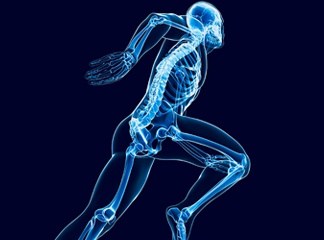Introduction
Aging is an inevitable part of life, and with it often comes a myriad of challenges, particularly concerning joint mobility and overall quality of life. Many seniors experience discomfort in their joints, which can significantly affect daily activities. However, there’s hope! Osteopathy offers a holistic approach to managing pain and enhancing mobility for seniors. This article explores how osteopathic medicine can improve joint health, promote biomechanics, and ultimately contribute to a better quality of life.
Osteopathy for Seniors: Maintaining Joint Mobility and Quality of Life
Osteopathy is based on the principle that the body has the ability to heal itself. By focusing on the musculoskeletal system—joints, bones, muscles—osteopaths aim to restore balance and promote overall health. This approach is especially beneficial for seniors who often deal with age-related ailments like arthritis, osteoporosis, and chronic pain.
Understanding Osteopathic Medicine
What Is Osteopathic Medicine?
Osteopathic medicine is a branch of healthcare that emphasizes a whole-person approach to treatment. It incorporates traditional medical practices with osteopathic manipulative treatment (OMT). An osteopath, or osteopathic doctor, uses hands-on techniques to diagnose and treat various conditions.
The Role of an Osteopath in Senior Care
An osteopath plays a crucial role in senior care by assessing the body's structure and function. They understand how different systems work together, allowing them to provide tailored treatments that address specific concerns related to aging.
Common Conditions Treated by Osteopaths
Joint Pain: A Common Complaints Among Seniors
Joint pain affects millions of seniors worldwide. Whether it's due to arthritis or general wear and tear, managing this pain is essential for maintaining mobility.
Spinal Issues: Why They Matter
Spinal problems can lead to significant discomfort and reduced mobility in seniors. Osteopathy provides effective strategies for spinal alignment and pain relief.
Biomechanical Factors Affecting Seniors' Health
Understanding biomechanics—the study of movement—can help osteopaths identify issues affecting joint function in seniors.
The Benefits of Osteopathy for Seniors
1. Enhanced Joint Mobility
One primary benefit of osteopathy is improved joint mobility. Regular visits to an osteopathic doctor can help maintain flexibility in joints.
2. Reduced Pain Levels
Many seniors experience chronic pain; osteopathic techniques are designed to alleviate this discomfort effectively.

3. Improved Quality of Life Through Holistic Care
Integrating physical health with emotional wellbeing can drastically enhance a senior's quality of life, enabling them to enjoy their golden years fully.
How Osteopathy Works: Techniques Used by Osteopaths
Manual Therapy Techniques Explained
Osteopaths employ various manual therapy techniques that include stretching, gentle pressure, and resistance exercises aimed at enhancing muscle tone and reducing tension.
Cranial Osteopathy: A Gentle Approach for Seniors
Cranial osteopathy focuses on the head's bones and structures but also impacts overall well-being by improving bodily functions through cranial manipulation techniques.
When Should Seniors Consider Seeing an Osteopath?
Signs That Indicate You Need an Osteopathic Evaluation
If seniors experience persistent joint pain or decreased mobility despite regular exercise or medication, it may be time to consult an osteopath.
Finding the Right Osteopath in North Texas Musculoskeletal Medicine
What Makes North Texas Musculoskeletal Medicine Stand Out?
Located in North Texas, this facility specializes in treating musculoskeletal issues with a focus on personalized care tailored specifically for seniors.
Patient Testimonials: Real Experiences with Osteopathy
Hearing from others who have benefited from osteopathy can be enlightening:
- "After just a few sessions with my osteopath, I noticed a remarkable improvement in my joint flexibility." "I never realized how much my spine affected my overall health until I began treatment."
Creating an Effective Treatment Plan with Your Osteopathic Doctor
1. Initial Assessment and Diagnosis
Your journey begins with an initial assessment where your doctor will evaluate your medical history along with physical examinations.
2. Setting Goals Together
Goal setting between the patient and the doctor ensures that treatments align closely with individual needs aiming at specific outcomes like enhanced mobility or reduced pain levels.
Lifestyle Changes Recommended by Osteopaths for Seniors
Incorporating lifestyle changes such as nutrition adjustments or specific exercises can bolster treatment effectiveness tremendously!
FAQs About Osteopathy for Seniors
What conditions can osteopathy help treat?- Osteopathy can treat various conditions including arthritis, back pain, neck pain, headaches, and other musculoskeletal issues.
- Yes! Treatments are tailored specifically for older adults ensuring they are both safe and effective.
- The frequency depends on individual needs but typically ranges from weekly visits initially tapering off as improvements are realized.
- Most patients experience minimal side effects; some may feel mild soreness post-treatment similar to after exercising.
- Absolutely! It’s often recommended that patients discuss all treatments they’re undergoing with their healthcare providers.
- Generally low-impact exercises such as walking or swimming; specific recommendations depend on individual assessments made during consultations.
Conclusion
In conclusion, "Osteopathy for Seniors: Maintaining Joint Mobility and Quality of Life" highlights how vital this form of medicine can be for older adults facing numerous challenges associated with aging joints and general health decline. With its holistic approach focusing on both physical wellness and emotional stability through manual therapies like OMT along with personalized care plans from experienced professionals such as those found at North Texas Musculoskeletal Medicine—osteopathic medicine stands ready as a beacon of hope providing improved health outcomes enabling older adults not just live longer but thrive!
By addressing these multifaceted aspects decisively through knowledge gained from research alongside testimonies shared among peers—hopefully shedding light upon why more individuals should consider incorporating this practice into their healthcare routines when dealing specifically about maintaining optimal joint function throughout time!